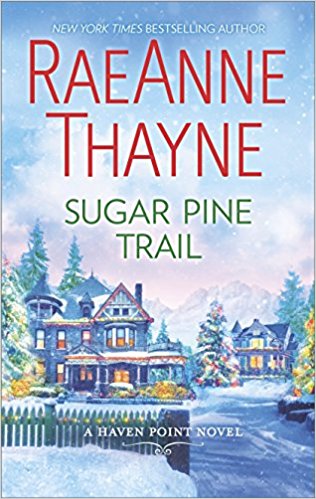 Sugar Pine Trail (Haven Point, #7) by RaeAnne Thayne
Sugar Pine Trail (Haven Point, #7) by RaeAnne Thayne Formats available: paperback, large print, ebook, audiobook
Series: Haven Point #7
Pages: 384
Published by Harlequin Books on September 26th 2017
Purchasing Info: Author's Website, Publisher's Website, Amazon, Barnes & Noble, Kobo, Bookshop.org
Goodreads
An unlikely attraction brings comfort, joy and unforgettable romance this holiday season!
Librarian Julia Winston is ready to ditch the quiet existence she's been living. She's made a list of new things to experience, but falling for Jamie Caine, her sexy military pilot neighbor, isn't one of them. Julia's looking to conquer life, not become the heartbreaker's latest conquest. But when two young brothers wind up in Julia's care for the holidays, she'll take any help she can get—even Jamie's.
Happy to step in, Jamie reveals a side of himself that's much harder to resist. Not only is he fantastic with kids, he provides the strength Julia needs to tackle her list. She knows their temporary family can't last beyond the holidays, but the closer she gets to Jamie, the more she wonders if things could be this merry and bright forever…
My Review:
It may only be September, but welcome to the first holiday book review of the year!
 And we’re back in cozy Haven Point in this follow up to Serenity Harbor and my personal favorite in the series, Riverbend Road.
And we’re back in cozy Haven Point in this follow up to Serenity Harbor and my personal favorite in the series, Riverbend Road.
Sugar Pine Trail even ties up a bit of the story in Riverbend Road, right along with the series’ ongoing efforts to get all the Caine brothers of Caine Tech matched up with the women they’ve been waiting their whole lives for – even if they haven’t known it.
The hero this time around is Jamie Caine, the pilot. Jamie spends his days flying his brothers and the other executives of Caine Tech wherever and whenever they need to go. And his nights with a seemingly endless succession of beautiful but ultimately forgettable women who go in knowing that all they’ll get is a few good rides.
Jamie is a flirt and a charmer, and not in the least shy of using those charms to get whatever, or whoever he wants. While he’s not quite a player – he’s the closest thing that tiny Haven Point has ever seen.
Julia Winston, on that other hand, is the town librarian. And she seems to have bought into the stereotype just a bit too much, even though she’s only in her early 30s. Renting Jamie the upstairs apartment in her huge Victorian house is way outside her comfort zone – if only because Julia, along with more than a few women in town – has an unrequited crush on Jamie.
But Julia has also discovered within herself a desire to finally take charge of her own life, and to stop letting her fears hold her back from all the experiences that she once upon a time believed she wanted. Including an orgasm not brought about entirely by her own efforts.
 Jamie’s not the only new male to enter her life. In an act of concern and charity, Julia follows home two little boys who seem to be living in the library – and who don’t seem to have an adult around. Once she discovers their true situation and brings social worker Wyn Emmett (the heroine of Riverbend Road) into the case, she learns that the only way that these two brothers can stay together for Christmas is if someone steps up and can foster them together while officials hunt for their missing.
Jamie’s not the only new male to enter her life. In an act of concern and charity, Julia follows home two little boys who seem to be living in the library – and who don’t seem to have an adult around. Once she discovers their true situation and brings social worker Wyn Emmett (the heroine of Riverbend Road) into the case, she learns that the only way that these two brothers can stay together for Christmas is if someone steps up and can foster them together while officials hunt for their missing.
To everyone’s surprise, including her own, Julia volunteers to step so far out of her comfort zone that there’s no looking back. She fosters them herself, knowing nothing about fostering and even less about take care of children.
Lucky for her, her new upstairs tenant comes to her rescue when she finds herself way, way over her head. Jamie not only takes the two boys under his wing, but manages to even charm her supercilious cats into purring under his hand.
And finds himself, in turn, charmed by the woman that Julia reveals as she opens her heart to the boys and lets her hair down, both metaphorically and physically with him. Once the starch is worn out of Julia, he discovers that the sweet, lovely and slightly flustered woman she is underneath is someone he can’t resist.
No matter how much he tells himself that he should.
Escape Rating B: I like Haven Point a lot. It’s a great place to visit, filled with lovely people that it is a joy to get to know.
On the one hand, the problem that pulls the lives of Julia and the two boys together is one that every library faces in some way, in both large and small places. At the end of the evening, it is not uncommon to discover one or two (or more) children who are too young to be left on their own but who don’t seem to have a responsible adult picking them up. Leaving them feels unsafe, but when it happens night after night, the staff who feel forced to stay overtime end up both worried and resentful. While calling the police seems heartless, it is often the only way to deal with the problem so that everyone, including the library staff, feel safe and protected.
Julia’s solution to this dilemma is unique, but the problem happens more often than people think, although usually not in such dire circumstances. As much as I applauded her in the book, at the same time, that she fostered the children herself made her feel like “not one of us” as did her continual harping on how she both fit and embraced the stereotype of librarian. As a group, we pretty much deride the stereotype whenever and wherever possible. It’s almost a game we play of complaining just how terrible and just plain wrong the old stereotype is.
Of course, readers who are not themselves librarians will not be bothered by this aspect. But I did want to shake her and drag her to a big library conference to see for herself.
The fears that held Julia back in so many ways, while they had nothing to do with being a librarian, felt all too real. She had created a shell around herself, for reasons that often made sense at the time. But her desire to break out of that shell and find out who she really wanted to be was well portrayed.
As a character, I liked Jamie and loved the way that he stepped in, stepped up and helped Julia figure out her sudden immersion in parenting. Not that he had any more experience as a parent, but he did have experience both as a sibling in a large family and in wrangling his nieces and nephews. As the only child of two only children, Julia’s life just hadn’t included much of those kinds of interactions. She needed his help, and as difficult as it was for her, accepting that help was necessary for her to grow up and to break out of that shell.
However, I’m not sure I really bought their romance. The relationship that Julia forged with the boys, and her heartbreak at the end, was sweet and crazy and just right. But I didn’t quite feel the chemistry between Julia and Jamie.
But I still had a great time visiting Haven Point for the holidays, and will be happy to make a return trip sometime soon. Maybe in the spring, when I won’t have to read about SNOW!
~~~~~~ GIVEAWAY ~~~~~~
I am giving away a copy of Sugar Pine Trail to one lucky continental US winner

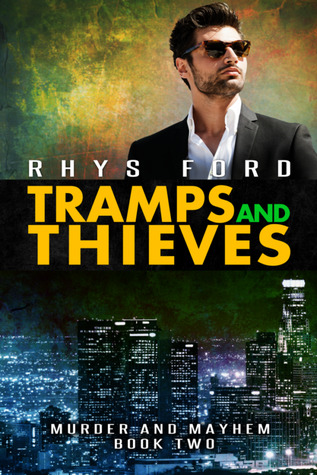 Tramps and Thieves by
Tramps and Thieves by  Where the first book,
Where the first book, 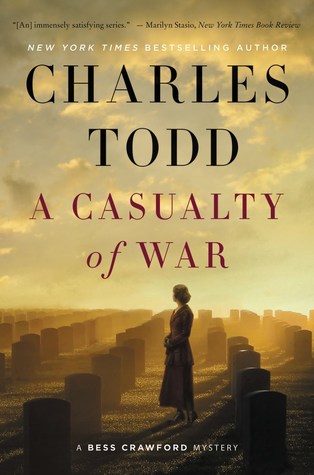 A Casualty of War (Bess Crawford #9) by
A Casualty of War (Bess Crawford #9) by 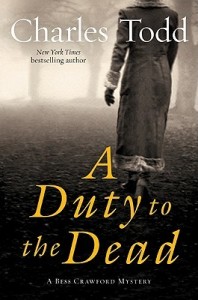 I have loved this series from its very beginning in
I have loved this series from its very beginning in 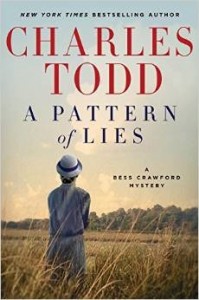 So the mystery in A Casualty of War had its anticlimactic moments, and also resembled bits of
So the mystery in A Casualty of War had its anticlimactic moments, and also resembled bits of 

 Blog Recap:
Blog Recap: Coming Next Week:
Coming Next Week:















 Away With the Fairies (Phryne Fisher Mystery #11) by
Away With the Fairies (Phryne Fisher Mystery #11) by  Having recently re-watched the first season of the TV series, the difference between the TV and literary versions of this story stand out even more clearly. The subplot revolving around Phryne’s concern for Lin Chung and her subsequent rescue of him are completely scrapped in the TV version for the weaker and much less compelling murder investigation. And even though I understand why, the story definitely loses something in translation. The story is much stronger in the book. Miss Lavender’s case was too slight and inconsequential to carry the whole story, and it’s better here where it doesn’t.
Having recently re-watched the first season of the TV series, the difference between the TV and literary versions of this story stand out even more clearly. The subplot revolving around Phryne’s concern for Lin Chung and her subsequent rescue of him are completely scrapped in the TV version for the weaker and much less compelling murder investigation. And even though I understand why, the story definitely loses something in translation. The story is much stronger in the book. Miss Lavender’s case was too slight and inconsequential to carry the whole story, and it’s better here where it doesn’t.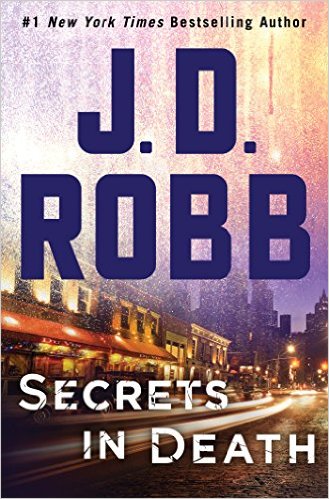 Secrets in Death (In Death, #45) by
Secrets in Death (In Death, #45) by 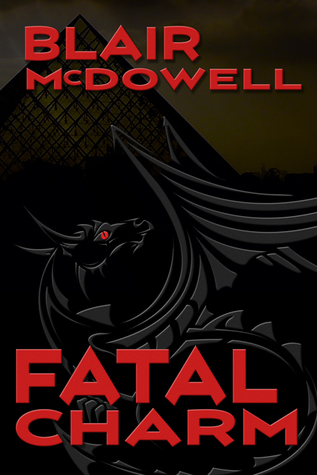 Fatal Charm by
Fatal Charm by  If you love well-crafted romantic suspense where the mystery is every bit as mysterious as the romance is romantic, check out Blair McDowell’s work. I found her through a book tour five years ago, and she is one of my happiest discoveries. From the very first book,
If you love well-crafted romantic suspense where the mystery is every bit as mysterious as the romance is romantic, check out Blair McDowell’s work. I found her through a book tour five years ago, and she is one of my happiest discoveries. From the very first book, 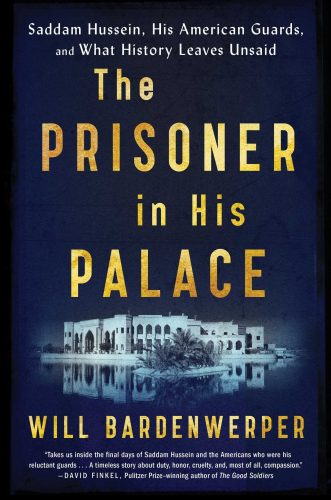 The Prisoner in His Palace: Saddam Hussein, His American Guards, and What History Leaves Unsaid by
The Prisoner in His Palace: Saddam Hussein, His American Guards, and What History Leaves Unsaid by